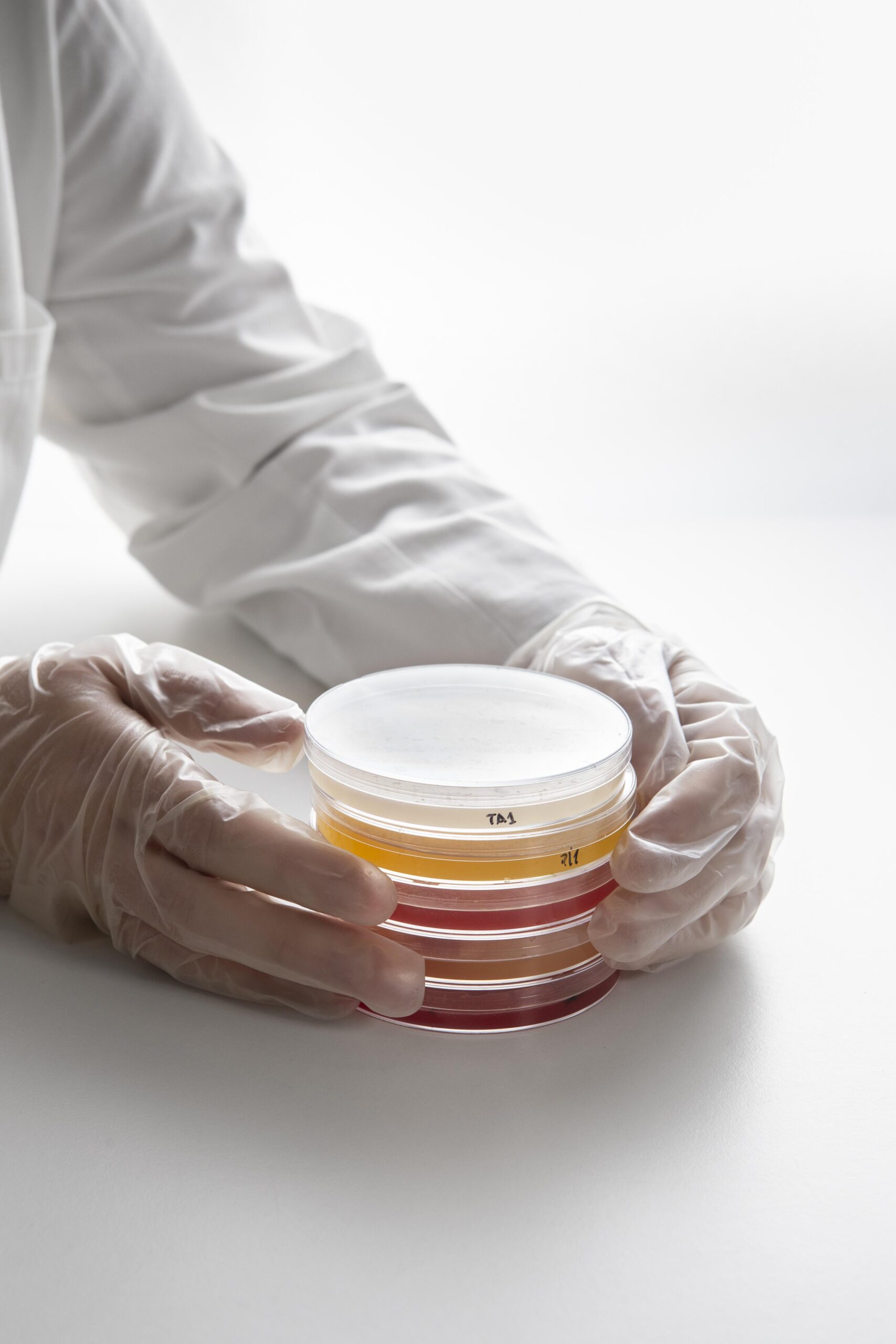The production of prefilled Petri dishes is a sophisticated process that combines precision engineering with cutting-edge technology. Here are the critical steps involved:
1. Clean Room Technologies
- Manufacturing takes place in ISO-certified clean rooms to minimize contamination risks. These controlled environments maintain specific levels of particulate matter, temperature, and humidity.
2. Automated Filling Systems
- Advanced machinery automates the filling of Petri dishes with growth media. These systems ensure consistent volume, uniform distribution, and rapid production to meet large-scale demands.
3. Precision Engineering
- High-precision moulds and equipment ensure that every dish meets stringent dimensional and quality standards. This consistency is vital for accurate and reproducible results in research and diagnostics.
Sterility Assurance
Ensuring sterility is the cornerstone of prefilled Petri dish production. This involves multiple layers of validation and monitoring:
1. Sterilization Techniques
- Common methods include gamma irradiation, autoclaving, and ethylene oxide sterilization. Each technique is chosen based on media composition and packaging material.
2. Validation Methods
- Rigorous validation protocols test the effectiveness of sterilization processes. Biological indicators and microbial testing confirm sterility before product release.
3. Continuous Monitoring
- Sensors and automated systems monitor environmental conditions during production. Regular audits and quality checks ensure compliance with sterility standards.
Media Preparation
The growth media used in prefilled Petri dishes is a critical factor influencing their performance. The preparation process includes:
1. Nutrient Formulation
- Formulas are meticulously designed to support the growth of specific microorganisms. Common types include nutrient agar, blood agar, and MacConkey agar.
2. Quality of Ingredients
- Only high-purity ingredients are used to minimize variability and enhance reliability. This includes pharmaceutical-grade agar, peptones, and other additives.
3. Customization Capabilities
- Manufacturers offer bespoke media formulations tailored to specific research needs. This flexibility supports specialized applications, such as selective or differential microbiological studies.
Packaging Innovations
Packaging plays a crucial role in maintaining the integrity and shelf life of prefilled Petri dishes. Recent innovations include:
1. Barrier Technologies
- Multi-layer packaging materials create an effective barrier against moisture, oxygen, and contaminants.
2. Modified Atmosphere Packaging
- Some products utilize gas-flushed packaging to inhibit microbial growth and extend shelf life.
3. Shelf-Life Extension
- Vacuum-sealing and advanced sealing techniques prevent dehydration and maintain media quality over extended periods.
Quality Control
Robust quality control measures ensure that prefilled Petri dishes meet the highest standards of reliability and performance:
1. Microbiological Testing
- Random samples from each batch undergo sterility tests and microbial load assessments to verify compliance.
2. Statistical Process Control
- Data-driven methodologies track production parameters, ensuring consistency and identifying anomalies.
3. Traceability Systems
- Modern production lines integrate traceability systems that log each batch’s manufacturing history, allowing quick identification and resolution of issues.
Emerging Technologies
The future of prefilled Petri dishes lies in leveraging cutting-edge technologies to enhance functionality and efficiency:
1. Nanotechnology Integration
- Nanomaterials could be incorporated into growth media or packaging to improve sterility and functionality.
2. Smart Packaging
- Intelligent packaging solutions, such as temperature-sensitive labels, provide real-time feedback on storage conditions.
3. Digital Tracking
- IoT-enabled systems offer digital tracking of batches, enabling seamless inventory management and quality assurance.
The technology behind prefilled Petri dishes exemplifies the convergence of engineering, microbiology, and innovation. From precision manufacturing to advanced packaging and emerging technologies, every aspect is designed to deliver reliability and convenience to researchers worldwide. As these technologies evolve, prefilled Petri dishes will continue to play a pivotal role in advancing scientific discovery and diagnostic precision.


